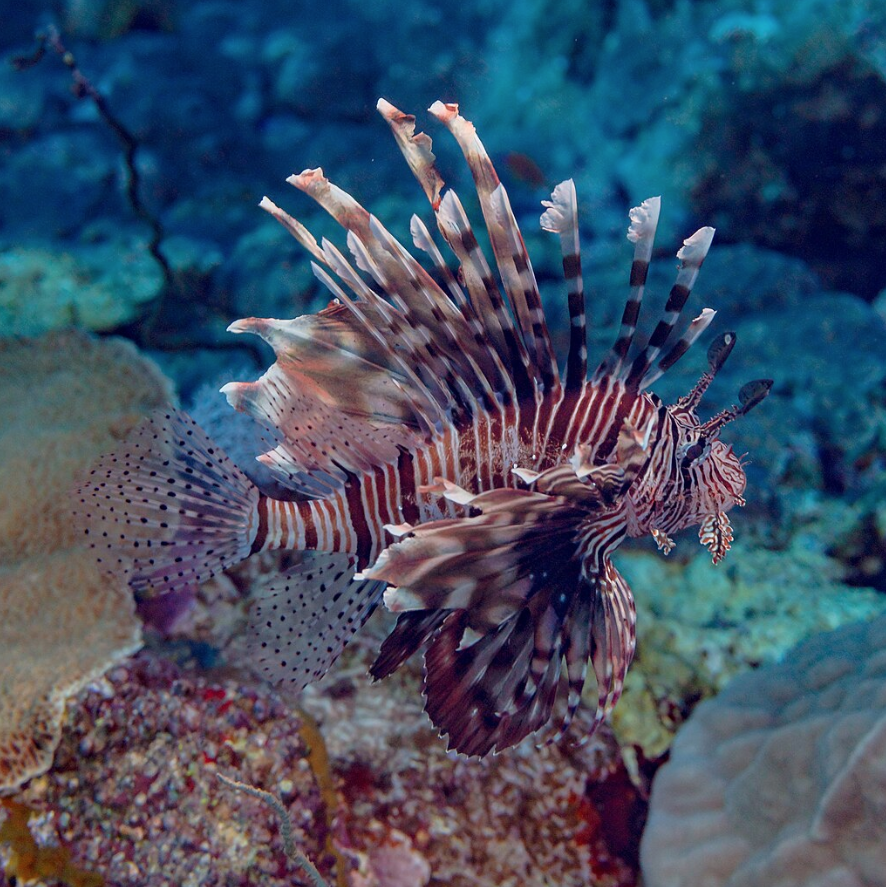Invasive lionfish are continuing to spread throughout the Mediterranean, according to a recent article in the journal NeoBiota. The well-known venomous reef fish are now being found as far west as Spain and as far north as Croatia, only their point of entry is not being blamed on saltwater aquarists this time as these came from the Red Sea via the Suez Canal. They’re not Pterois volitans from the Indo-Pacific either. They’re Pterois miles, and generic studies of the Mediterranean fish can trace them back to the Red Sea.
The Mediterranean is home to 11,000 animal species and 540 fish, 9% of which are endemic. The first invasive lionfish was spotted off the coast of Israel in 1999, then pretty much nothing until one turned up in Lebanon in 2012. By 2014 they were showing up in Turkey, Cyprus, Greece, and Italy, and by 2016 they were officially classed as invasive. Lessepsian species enter the Mediterranean every year and the Suez Canal is now the source of two-thirds of the exotic species present.

The Med is now the most invaded sea in the world and despite it being classed as temperate/sub-tropical, Pterois miles is thriving there. Several P. miles sightings were reported in areas that were considered to have winter surface temperatures that are too cold for this species (< 15 °C) such as the northern Aegean and southern Adriatic. It also seems equally at home in cool rocky reefs, seagrass meadows, and sandy patches as it does in the tropical coral reefs of the Red Sea. And the world is getting warmer…
Another Red Sea lionfish, P.radiata, has not become established in the Mediterranean however, possibly because it’s a more specialized predator, but just like P.volitans in the Atlantic, the highly predatory nature and predator-proof venomous spines combination means that lionfish can reduce recruitment of juveniles and the biomass of local species by up to 65%. That could spell disaster for the Mediterranean fish species and the 150 million people who rely on them.
Read the full paper here at https://neobiota.pensoft.net/article/110442/
Image credits Diego Delso, CC BY-SA 4.0 https://creativecommons.org/licenses/by-sa/4.0, via Wikimedia Commons



